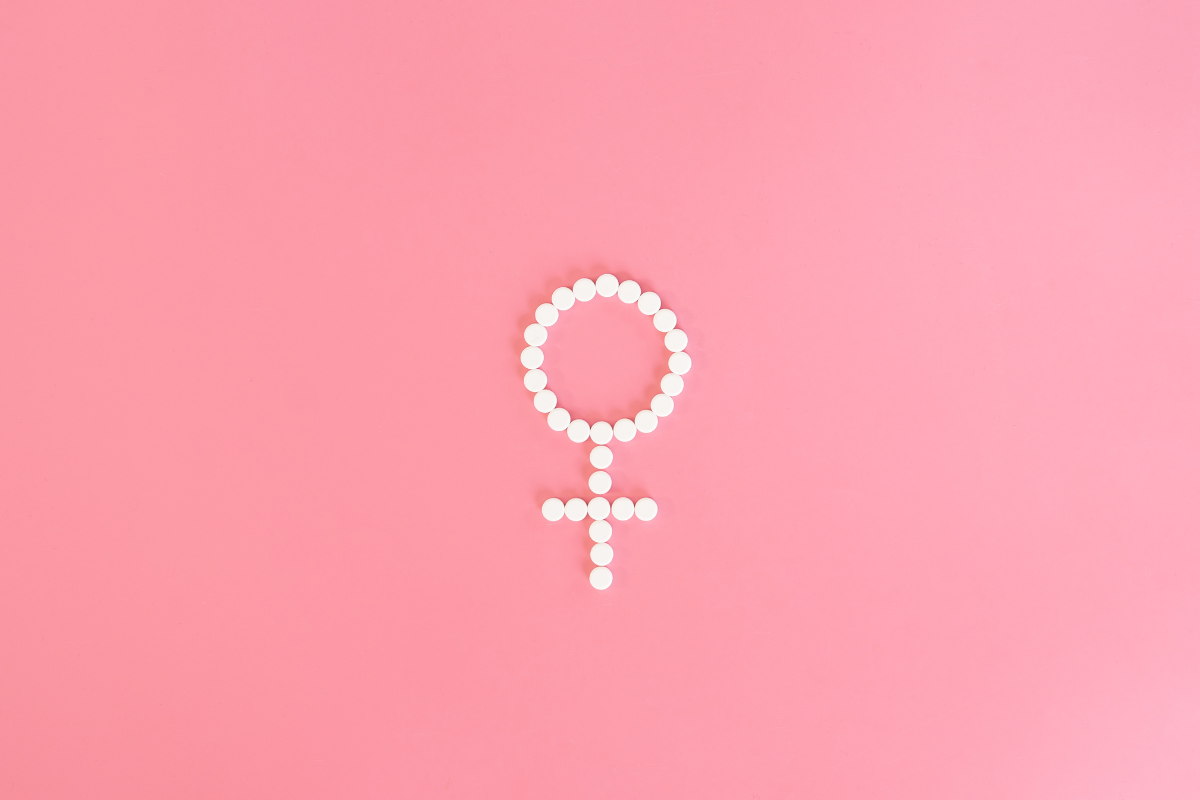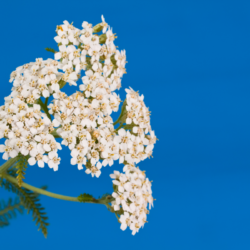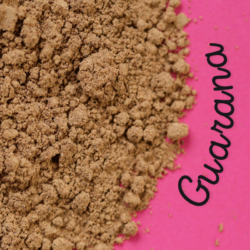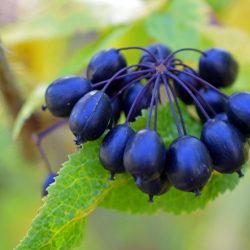There is a hormonal decline towards the end of the period of female genital activity; as the years go by, and particularly from around the age of 40 onwards, women experience a succession of sex hormone deficiencies at a rate and intensity that varies from one person to another. Progesterone levels begin to fluctuate in the thirties, followed by a decline and then a collapse in oestrogen levels as we approach 50. After the age of 50, there is a gradual decline in androgens (more frequent from the age of 60 onwards). The menopause occurs between the ages of 48 and 55 on average, sometimes earlier, sometimes later.
What are the stages of the menopause?
Contrary to popular belief, the menopause itself lasts just one day. In fact, it is the day on which menstruation ceases for 12 consecutive months. This precise definition highlights the exact day on which a woman officially passes from the perimenopause to the postmenopause, underlining the definitive nature of the end of regular ovarian function and fertility.
The menopause is a natural process marked by several key stages:
- Premenopause: This phase precedes the menopause, when the first hormonal changes begin to appear. Menstrual cycles become irregular but do not cease altogether.
- Perimenopause: During this period, hormonal fluctuations become more pronounced, leading to symptoms such as hot flushes, sleep disturbances and mood swings. This phase lasts up to a year after the last menstrual period.
- Menopause: Officially diagnosed after 12 consecutive months without menstruation, signifying the cessation of ovarian function and the end of fertility.
- Postmenopause: The years following the menopause, when symptoms may diminish but the risk of certain health conditions, such as osteoporosis and cardiovascular disease, may increase due to the prolonged drop in oestrogen levels.
Hormone regulation in the event of oestrogen deficiency
Oestrogens :
Oestrogens stimulate the growth of epithelial tissue through their mitogenic effect, which manifests itself in all female sexual glandular epithelia. They increase vascularisation, and above all vascular permeability, resulting in mammary congestion; they sensitise epithelial tissue to the action of prolactin. The action of endogenous oestrogens is based mainly on the mechanism of their binding to the α and β receptors, leading to a change in gene expression.
If oestrogen levels fall, FSH must be reactivated. This reactivation leads to oestrogen secretion. In the absence of a sufficient oestrogen response, the FSH stimulates the production of adrenal androgens, with or without aromatisation (transformation of testosterone into oestradiol).
Progesterone :
Progesterone modulates or inhibits the effects of oestrogens by opposing the increase in vascular permeability. In particular, it exerts a paradoxical dual action at epithelial level; it blocks the growth of galactophore ducts through an anti-oestrogenic effect, but participates in the development of acini in synergy with oestrogens.
If progesterone levels fall, LH must be reactivated. This stimulus leads to progesterone secretion. In the absence of a sufficient progesterone response, LH stimulates the production of genital androgens.
Androgens :
Androgens have an incomplete pseudo-progestogenic action, and tend to inhibit mammary development.
If genital androgens fall, LH must be reactivated. This stimulus generates androgen secretion. In the absence of a sufficient genital androgen response, LH stimulates the production of adrenal androgens.
Prolactin :
Prolactin has a mitogenic effect and participates in cell differentiation in synergy with sex steroids. It increases oestradiol receptors.
Other hormones are involved in mammary physiology: insulin, cortisol, growth hormone and thyroid hormones.
Female hyperoestrogenic hormone disorder
This is rarely due to ovarian overproduction. Other factors add to the natural oestrogen contingent. The main clinical symptoms are premenstrual syndrome (PMS), with or without mastosis, fibroids, endometriosis, vaginal candidiasis, irritability, cyclical aggression and cellulitis. It promotes venous insufficiency, increases the risk of hormone-dependent cancers, and is often accompanied by a lack of iron (low ferritin), hypothyroidism or vaginal candidiasis.
Hepatic detoxification of oestrogens
Estrogens can also take the (favourable and safe) route of 2OH-oestrone in phase 1 detoxification: this compound, which is non-estrogenic, non-active and non-toxic, leads to stable, non-hazardous DNA adducts in phase 2.
Oestrogens can also pass through the 16αOH-oestrone pathway (highly oestrogenic, genotoxic) during phase 1. This compound is then transformed into E3 oestriol (a short-acting oestrogen) during phase 2. This latter metabolic pathway, which is much less favourable than the first in terms of mutagenic risk, is more common in overweight or obese women, whereas slim women mainly use the first pathway.
The advantage of plants such as artichoke and black radish is that not only do they facilitate the hepatic detoxification of oestrogens, but they also direct it towards the safe 2OH-oestrone pathway, which is of interest to overweight women, whose risk of hormone-dependent cancer (breast, ovary, endometrium) is increased.
It should be noted that the intestine plays a role in the metabolism of oestrogens, via a mechanism of reabsorption by the enterohepatic cycle of oestradiol (E2) and oestrone (E1), which is increased in cases of intestinal dysbiosis.
Hormonal regulation through phytotherapy
Phytotherapy provides remarkably effective plants with genital activity:
The progesterone-mimetic activity of Alchemilla :
-
Luteotropic properties:
Alchemilla regulates ovarian secretion of progesterone and facilitates luteal secretion and production, which makes it clinically effective in endometriosis and the treatment of premenstrual and menstrual disorders due to its progestogen-like activity, and its emmenagogue action: it provokes, facilitates and regulates menstruation.
The oestrogenomimetic activity of Alfalfa, Hops and Clary Sage:
-
Hormonal properties of Alfalfa :
Alfalfa ‘s oestrogenic activity has been recognised thanks to the presence of coumestanes (coumestrol, 4-methoxycoumestrol), which bind to oestrogen receptors and show uterotrophic activity, as well as its other isoflavones (genistein, daidzein) and lignans.
-
Hops’ oestrogenic and anti-androgenic hormonal properties:
Studies measuring oestrogenic activity in vitro on human endometrial cell lines have shown that oestrogenic activity is essentially due to 8-prenylnaringenin (hopein), as well as 6-prenylnaringenin and isoxanthohumol (not xanthohumol). The powerful activity of 8-prenylnaringenin, the most oestrogenic compound in hops, has been confirmed by several studies. This is reflected in its ability to bind competitively and equivalently to the α and β oestrogen receptors, with a much higher relative binding affinity than that of the two recognised phytoestrogens, coumestrol and genistein.
In women, 8-prenylnaringenin has been shown to be effective against menopausal climacteric disorders (hot flushes, vaginal dryness, mood and sleep disorders, etc.) in several randomised, double-blind, placebo-controlled studies.
8-prenylnaringenin is also thought to be responsible for the anti-androgenic activity of hops. It also inhibits angiogenesis in vitro and in vivo.
Isoxanthohumol, for its part, is only weakly phytoestrogenic. However, it can be converted to 8-prenylnaringenin by a mechanism involving the intestinal microbiota.
-
Oestrogenomimetic properties of Clary Sage :
The compounds responsible for this property are not clearly identified. Sage triterpenes are similar in configuration to oestrogens, but lack the phenol nucleus. Diterpenes contain a phenol ring associated with an epoxide bridge.
Clary sage is considered to be an ovarian oestrogen booster, stimulating oestrogen receptors α and β.
An emenagogue, it stimulates blood flow in the pelvic region and regulates the menstrual cycle. It is thought to be anti galactogenic.
The androgenomimetic activity of Ginseng, Tribulus and Mucuna:
-
Ginseng’s property of hormonal modulation of the pituitary-cortical-adrenal axis:
Ginseng regulates stress hormones during the menopause and improves the cortisol/DHEA ratio. In addition to their ability to independently target multi-receptor systems on the plasma membrane, ginsenosides activate intracellular steroid receptors, among others.
-
Properties of Tribulus on libido, sexual activity and spermatogenesis:
In men, Tribulus stimulates testosterone levels in healthy volunteers, particularly free testosterone, when they are lower than normal, but not in those with normal initial values. However, it does not appear to increase testosterone levels in healthy subjects, particularly young men.
The action of tribulus is more marked in situations of hormonal dysfunction, as shown by a recent study (2017), carried out on 65 infertile men with disorders of spermatogenesis.
-
Properties of Mucuna on androgen deficiency and male fertility:
Mucuna consumption significantly reduces age-related sperm damage by increasing antioxidant defences. It also increases sperm concentration and motility. This property has been confirmed in ascezoospermic men. It has also been shown, in hypofertile men, that mucuna restores antioxidant enzymes (SOD, catalase, etc.) and improves sperm quality. In addition, M. pruriens significantly increases testosterone and LH, which are essential for enhancing spermatogenesis. Taking mucuna also reduces FSH levels, the increase in which is correlated with damage to the seminiferous tubule. The plant also reduces prolactin.
Medical literature and clinical trials:
- Milligan S. et al, Oestrogenic hormonal activity of the hop phyto-oestrogen, 8-prenylnaringenin, Reproduction, 2002
- Kuiper G.G. et al, Comparison of the ligand blinding specificity and transcript tissue distribution of estrogen receptors α and β, Endocrinology, 1997
- Milligan S.R. et al, Identification of a potent phytoestrogen in hops (Humulus lupulus L.) and beer; J Clin Endocrinol Metab, 1999
- Milligan S.R. et al, The hormonal endocrine activities of 8-prenylnaringenin and related hop (Humulus lupulus L.) flaconoids; J Clin Endocrinol Metab, 2000
- Schaefer O. et al, 8-Prenylnaringenin is a potent ER selective phytoestrogen present in hops and beer; Journal of Steroid Biochemistry and Molecular Biology, 2003
- Zierau O. et al, Estrogenic activity of the phytoestrogens naringenin, 6-(1,1-dimethylallyl) naringenin and 8-prenylnaringenin, Planta Med, 2002
- Erkkola R. et al, A randomized, double-blind, placebo-controlled, cross-over pilot study on the use of a standardized hop extract to alleviate menopausal discomforts, Phytomedicine, 2010
- Heyerick A. et al, A first prospective, randomized, double-blind, placebo-controlled study on the use of a standardized hop extract to alleviate menopausal discomforts, Maturitas, 2006
- Pepper Michael S. et al, 8-prenylnaringenin, a novel phytoestrogen, inhibits angiogenesis in vitro and in vivo, J. Cell Physiol, 2004
- Stulikova K. et al, Therapeutic Perspectives of 8-Prenylnaringenin, a Potent Phytoestrogen from Hops, Molecules, 2018
- Tode T. et al, Effect of Korean red ginseng on psychological functions in patients with severe climacteric syndromes; Int J Gynaecol Obstet, 1999
- Attele A.S. et al, Ginseng pharmacology: multiple constituents for multiple actions, Biochem Pharmacol, 1999
- Santos C.A. t al., Tribulus terrestris versus placebo in the treatment of erctile dysfunction; A prospective, randomized, double blind study, Actas Urologicas Espanolas, 2014
- Neychev V.K. et al, The aphrodisiac hormonal herb Tribulus terrestris does not influence the androgen production inyoung men; J Ethnopharmacol, 2005
- Shukla K.K. et al, Mucuna pruriens Reduces Stress and Improves the Quality of Semen in Infertile Men; Evid Based Complement Alternat Med, 2010
- Shukla K.K. et al, Mucuna pruriens improves male fertility by its action on the hypothalamuspituitary-gonadal axis, Fertil Steril, 2009
- Ahmad M.K. et al. hormonal effect of Mucuna pruriens on semen profile and biochemical parameters in seminal plasma of infertile men; Fertil Steril, 2008







